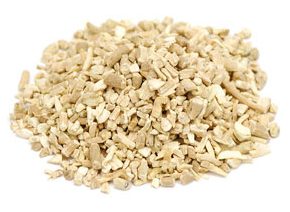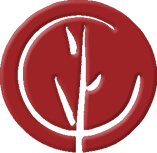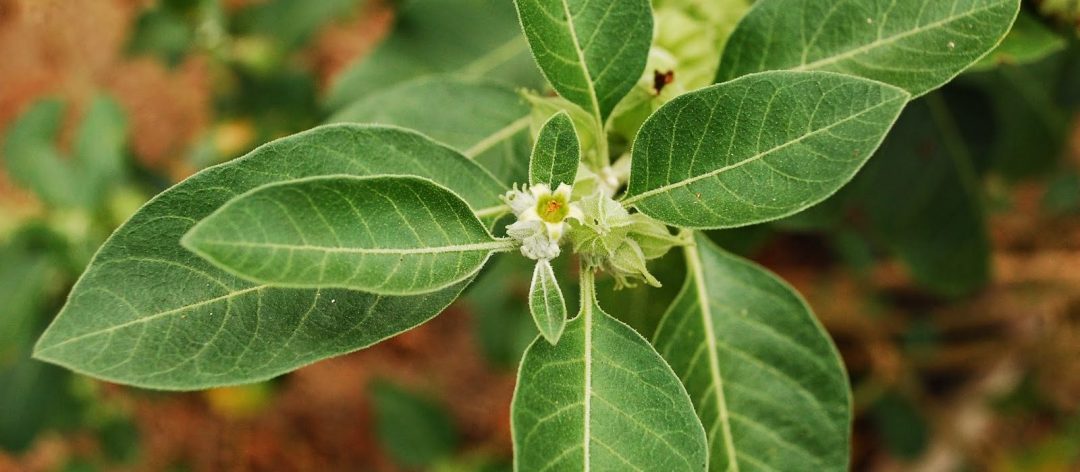Practitioners of Ayurvedic medicine, the traditional medicine of India, regard this root as the Indian answer to ginseng for the male libido. It is mainly used in the West as a restorative for the elderly and the chronically ill. For such regenerative purposes, it can be taken as a milk decoction to which may be added raw sugar, honey, pippali and basmati rice. As such, it inhibits ageing and catalyses the anabolic processes of the body. It is good food for weak, pregnant women, it helps to stabilise the fetus. It also regenerates the hormonal system, promotes healing of tissues, and can be used externally on wounds, sores, etc. Ashwagandha is believed to maintain the immune system and is often prescribed in India to be taken along with antibiotics to prevent weakening of the immune system. It elevates iron levels in the blood, slightly decreases respiration, lowers blood pressure, relaxes smooth muscles, and, due to its flavonoid compounds, counters liver toxicity.
It works as a monoamine oxidase inhibitor, thereby increasing the availability of dopamine, a neurotransmitter. It also appears to mimic the action of the neurotransmitter GABA (gamma amino butyric acid) in relaxing the body. It is known as a medharasayan remedy, “a promoter of memory and learning.”
The plant has a flavour somewhat similar to that of unsweetened chocolate. Tea prepared from the plant is often flavoured with spices such as cinnamon, cardamom, ginger, nutmeg, and milk. Ashwagandha powder is sometimes mixed with honey and almond butter or ghee and served with crackers.
Botanical Name
Withania somnifera
Part Used
Root
Common Names
Winter Cherry; Indian Ginseng; Ashvagandha (Sanskrit); Asagandh (Hindi)
Brief History
 Ashwagandha has been used for more than 2,500 years as a “vitalizer.” Today, we would place it in the category of adaptogens. It is rejuvenating, balancing, strengthening, and calming to the nervous system. Ashwagandha is useful for relieving fatigue, nervous exhaustion, and memory loss. This herb also has a reputation as an aphrodisiac and is believed to help prevent sterility in males and sexual ailments. A mild sedative, ashwagandha reduces mental chatter and promotes calm sleep. It also promotes tissue regeneration and slows the ageing process.
Ashwagandha has been used for more than 2,500 years as a “vitalizer.” Today, we would place it in the category of adaptogens. It is rejuvenating, balancing, strengthening, and calming to the nervous system. Ashwagandha is useful for relieving fatigue, nervous exhaustion, and memory loss. This herb also has a reputation as an aphrodisiac and is believed to help prevent sterility in males and sexual ailments. A mild sedative, ashwagandha reduces mental chatter and promotes calm sleep. It also promotes tissue regeneration and slows the ageing process.
It is excellent for use in bodybuilding and for any type of physical sport, as it gives an instant charge of long-lasting energy without the use of stimulants. Ashwagandha contains iron and may promote growth in children and improve haemoglobin levels. Also, Ashwagandha has shown promise in treating hypothyroidism (low levels of thyroid hormone in the blood).
Constituents
Therapeutic Properties
Tonic, chemoprotective, blood tonic, anxiolytic, adaptogen, tonic, sedative, nervine tonic, antiarrhythmic, anticancer, anti-inflammatory, antitumor, hypotensive
Vitalist Properties
Temperature: Warm
Moisture: Moistening
Therapeutic Indications
Anaemia, debility, nervous exhaustion, convalescence, emaciation, cancer (especially during chemotherapy), connective tissue disorders, chronic inflammation, impotence
Primary Uses
Alzheimer’s disease and memory problems.
Ashwagandha helps correct memory loss by modifying how the brain uses acetylcholine, a chemical that transmits messages from nerve cell to nerve cell. If oxygen levels are low, the brain acquires acetylcholine by destroying its own cells. The cell remnants form neurofibrillary tangles, blocking the transmission of nerve signals and resulting in Alzheimer’s-like symptoms. Ashwagandha decreases the likelihood that the brain will cannibalise its own cells. This action reduces the cognitive deficit and memory loss in diseases such as Alzheimer’s disease and dementia.
Arthritis and carpal tunnel syndrome.
Animal studies have found that naturally occurring steroids in ashwagandha are more potent than treatment with the synthetic steroid hydrocortisone for controlling inflammation. These natural steroidal compounds also reduce the pain of arthritis as effectively as aspirin and phenylbutazone when given in the same amount, but without the immune-depressing side effects those drugs cause. Patients who have trouble with balance (called cerebral ataxia) gained better balance with ashwagandha. In a clinical study of patients with osteoarthritis, ashwagandha and other herbs reduced pain and disability significantly.
Autoimmune disorders.
Ashwagandha increases red and white blood cell counts after treatment with azathioprine (Imuran, Azasan), cyclophosphamide (Cytoxan, Neosar), or prednisone for autoimmune diseases such as lupus.
Cancer.
Ashwagandha extracts increase platelet counts, red blood cell counts, and white blood cell counts during cancer chemotherapy treatment with cyclophosphamide (Cytoxan, Neosar). Animal studies in India also have found that ashwagandha sensitises cancer cells to radiation treatment, making treatments approximately 50 percent more effective. Studies have shown that Ashwagandha helps put cancer tumours of the breast, central nervous system, colon, and lung into regression without killing healthy tissues. The herb may also help prevent chemotherapy-induced neutropenia (low white blood cell count). However, the effectiveness of ashwagandha in the treatment of patients with cancer is not yet determined.
Sex drive, diminished.
Ashwagandha is a sexual “grounding” herb that reduces the frequency of premature ejaculation and increases sexual stamina. Ashwagandha’s active principles, alkaloids and withanolides, have longevity-enhancing and sexually stimulating properties.
Stress.
Ayurvedic medicine has used ashwagandha as a general tonic for centuries to stimulate long-term endurance. Ashwagandha contains steroid-like compounds that may increase resistance to stress.
Clinical Research
- Oral doses of ashwagandha demonstrated significant antistress activity, increased endurance, and enhanced growth and development in experimental models.
- A pharmacologic comparison of ashwagandha and Korean ginseng demonstrated that Ashwagandha had a similar potency to Korean ginseng in terms of adaptogenic, tonic, and anabolic effects. However, ashwagandha lacks the stimulating effects of Korean ginseng and is therefore ideally suited to the treatment of patients who are overactive but debilitated, for whom Korean ginseng would tend to cause overstimulation.
- Ashwagandha enhanced learning and memory in both young and old rats when given orally.
- Ashwagandha was shown to significantly increase the total white blood cell and neutrophil counts when given orally, both before and after cyclophosphamide treatment, and to reduce leukopenia induced by gamma radiation in vivo.
- After oral doses of ashwagandha, haemoglobin concentration, red blood cell count, white blood cell count, platelet count, and body weight were significantly raised in vivo laboratory models of immunosuppression.
- Ashwagandha has immunomodulatory activity. Extracts were shown to increase mobilisation, activation, phagocytosis, and secretory activity of macrophages in vitro and to significantly inhibit experimentally induced immunosuppression in vivo after oral administration. In contrast, ashwagandha lactones have demonstrated immunosuppressive effects in vitro and in vivo.
- Ashwagandha lactones exhibited antitumor and radiosensitising activity in several tumour cell models in vitro and in vivo after intraperitoneal and oral administration.
- Ashwagandha alkaloids demonstrated depressant activity on higher cerebral functions and caused prolonged hypotensive, bradycardic, respiratory stimulant, and sedative effects. Ashwagandha extract exhibited significant antiepileptic action and cognition enhancement when administered orally in models of epilepsy and Alzheimer’s disease, respectively.
- A randomised, double-blind, placebo-controlled trial found that milk fortified with ashwagandha (2 g/day of herb for 60 days) significantly increased mean corpuscular haemoglobin and serum albumin and tended to increase blood haemoglobin, serum iron, body weight, and strength of hand grip in children aged 8 to 12 years. The placebo group did not show any significant change or tendency to change.
- When tested on 101 healthy male patients aged 50 to 59 years, ashwagandha (3 g/day for 1 year) significantly improved haemoglobin, red blood cell count, seated stature, and hair melanin content. Ashwagandha also caused a decrease in serum cholesterol and erythrocyte sedimentation rate and countered decreased nail calcium. The trial was of randomised, double-blind, placebo-controlled design. About 71% of volunteers receiving ashwagandha reported improvement in sexual performance.
- In an uncontrolled trial, ashwagandha (1 g/day for 29 days) improved sleep patterns, responsiveness, alertness, a state of awareness, and physical capabilities in trainee mountaineers over a 29-day trek, which included a 5200 m (over 17, 000 ft) altitude gain.
- Ashwagandha (3 g/day for 30 days) decreased blood sugar levels from baseline in six patients with non-insulin–dependent diabetes. The hypoglycemic effect was similar to that obtained in the control group treated with glibenclamide. Also, ashwagandha increased diuresis, as evidenced by decreased serum potassium and increased urinary excretion of sodium and potassium. In a group of six patients with hypercholesterolemia, ashwagandha significantly reduced total serum cholesterol, triglycerides, low-density lipoprotein (LDL), and very low-density lipoprotein (VLDL) cholesterol compared with baseline values. Lipid profiles remained mostly unchanged in the untreated control group. The mean calorie and fat intakes of the treatment groups were higher than those of the control groups. 8
- Ashwagandha (4 to 9 g/day) was beneficial for patients with acute rheumatoid arthritis (and some cases of nonarticular rheumatism and chronic rheumatoid arthritis with acute exacerbations) in an uncontrolled trial conducted in the late 1960s.
Dosage (Divided Daily)
• Dried Powder: 1,000 – 6,000mg
• Ratio Extract: 500 – 3,000mg (5% Withanolides)
• Tincture: 5 – 14 mL (1:2)

Contraindications
None known
Side effects
High doses may cause gastrointestinal disturbances, vomiting, and diarrhoea. Caution with known sensitivity to the Solanaceae family.
Interactions with other drugs
Use with caution in patients taking immunosuppressant medication.
Bibliography
-
Balch, P. A., & Bell, S. J. (2012). Prescription for herbal healing (2nd ed.). New York, N.Y.: Avery.
- Bone, K. (2003). A clinical guide to blending liquid herbs: herbal formulations for the individual patient. St. Louis, MI: Churchill Livingstone.
- Herbalpedia (2013)
- Mars, B. (2007). The desktop guide to herbal medicine: the ultimate multidisciplinary reference to the amazing realm of healing plants, in a quick-study, one-stop guide. Laguna Beach, CA: Basic Health Pub.
All material on this website is provided for your information only and may not be construed as medical advice or instruction. No action or inaction should be taken based solely on the contents of this information; instead, readers should consult appropriate health professionals on any matter relating to their health and well-being.


Reblogged this on cancer killing recipe.
LikeLiked by 1 person
I have used the liquid form of ashwagandha a few times over the years. Mostly for immune support and liver. It’s good stuff! Great post!
LikeLiked by 1 person
Reblogged this on The Unexpected Tale as a Caregiver and How to Do It Better.
LikeLike